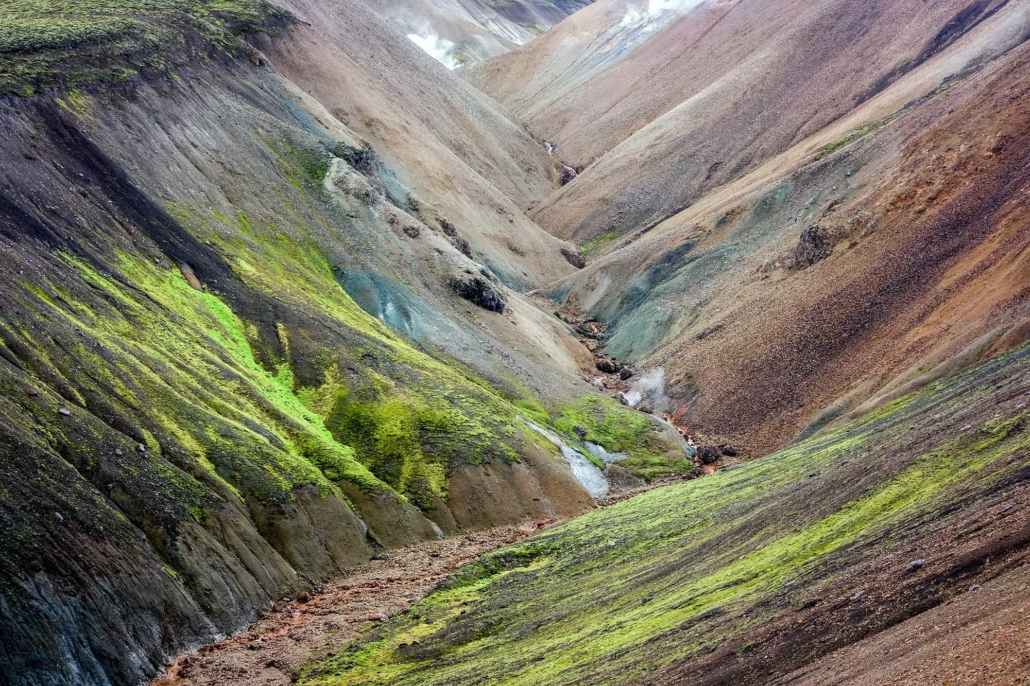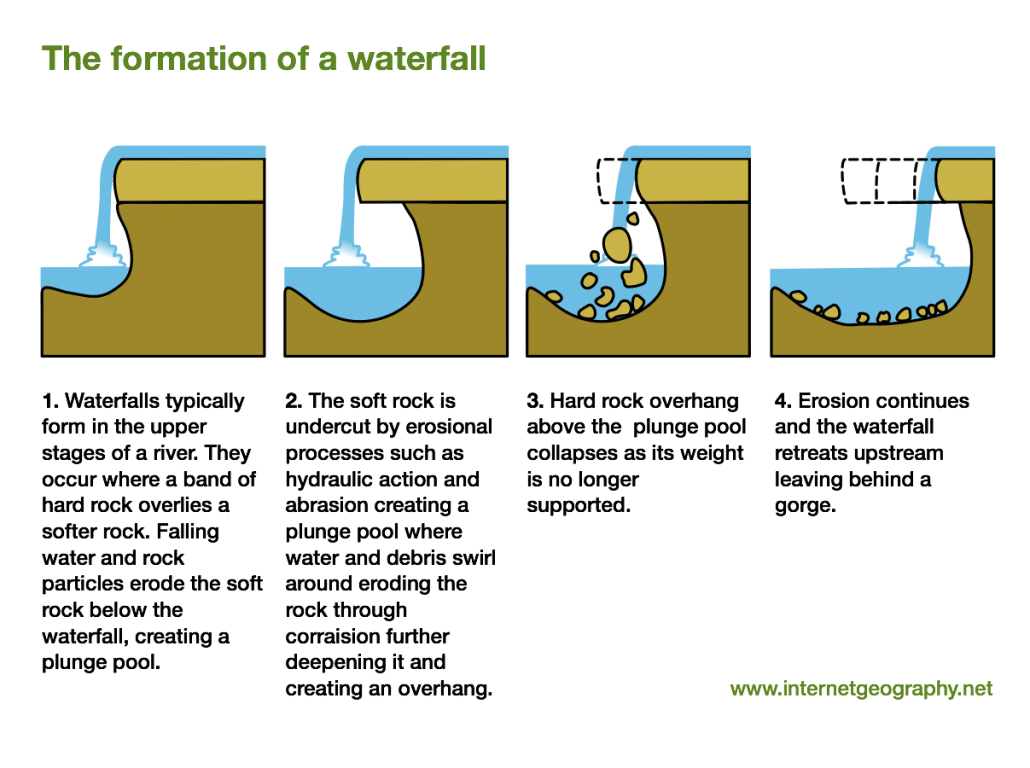The upper course of a river
What is the Upper Stage of a River?
The upper stage of a river, also known as the source or the headwaters, is the section of a river found closest to its origin. This part of the river typically begins in highland or mountainous areas, where precipitation collects and starts to flow downhill. The upper course is characterised by steep gradients and cascading water, initiating the river’s journey towards the sea.
Characteristics of the Upper Course
The upper course of a river is defined by its unique landscape and processes:
- Landscape: Steep, rugged terrain with narrow, deep valleys often surrounded by hills or mountains.
- Main Processes: Vertical erosion dominates, cutting deep into the landscape to create narrow channels. The high potential energy of the fast-flowing water drives this erosion.
- Main Geographical Features: V-shaped valleys, waterfalls, rapids, and interlocking spurs are commonly found in the upper course.
Formation of a V-shaped Valley
V-shaped valleys are a hallmark of the upper course of a river:
- Vertical Erosion: The river’s powerful flow cuts downward into the bedrock, deepening the river channel.
- Weathering: The valley sides are weakened by weathering processes such as freeze-thaw, which breaks up the rocks.
- Transport: As the river erodes vertically, it transports the eroded material downstream, further deepening the valley.
- Gravity: Loose material on the valley sides falls into the river channel, creating the characteristic “V” shape as the sides slope inward.
Formation of a Waterfall
Waterfalls are dramatic features found in the upper course of a river, formed by:
- Differential Erosion: Different rock types erode at different rates. Hard rock overlies softer rock, which erodes more quickly.
- Plunge Pool: The river undercuts the softer rock, creating an overhang. The force of the water falling creates a plunge pool at the base.
- Collapse: Eventually, the overhang collapses into the plunge pool due to gravity, and the waterfall retreats upstream.
- Continual Process: This process repeats, causing the waterfall to move back, carving out a gorge.
Land Uses in the Upper Course of a River
The upper course of a river is utilised for various purposes due to its unique landscape and water availability:
- Hill Sheep Farming: The steep slopes and rough terrain are suitable for grazing sheep, which can navigate and feed on the sparse vegetation.
- Forestry: Coniferous forests are often planted in the upper course for timber production, benefiting from the high rainfall and poorer soils.
- Recreation and Tourism: The scenic landscapes attract tourists for hiking, climbing, and nature observation, contributing to local economies.
- Reservoirs: The upper course is ideal for creating reservoirs, which store water for domestic and industrial use and help regulate river flow.
- Hydroelectric Power: The steep gradients and fast-flowing water are harnessed for hydroelectric power generation, providing renewable energy.
Check Your Understanding
Coming soon


